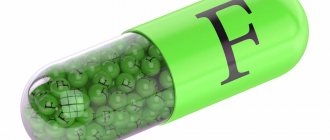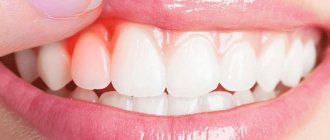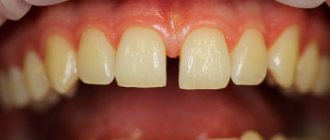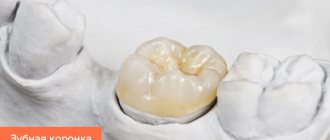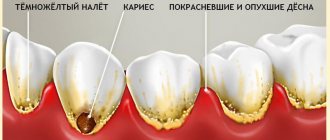A beautiful smile is a natural desire of people, regardless of age and gender. In pursuit of aesthetics, many practice using advertised fluoridated toothpaste to whiten and strengthen teeth. But mass market products do not always live up to expectations. If you want a healthy smile, professional help in solving problems related to dental health, you will receive at the Nurimed dental clinic in St. Petersburg. You can make an appointment with a doctor by calling.
Definition
· Poisoning occurs when consuming fluoride (F, Latin fluorum) or fluorine-containing substances in toxic concentrations.
· The toxicity of fluorine compounds depends on the degree of solubility of the compound.
· The toxic dose in children under 5 years of age is considered to be greater than 25 mg of fluoride.
· The toxic dose in people over 5 years of age is considered to be more than 5 mg fluoride/kg body weight.
· Consumption of more than 17-22 mg sodium fluoride/kg (8-10 mg fluoride/kg) causes symptoms of severe toxicity in children.
· Sodium fluoride is a commonly used compound F in caries prevention (eg, toothpaste and other dental care products). 1 mg of fluoride corresponds to 2.2 sodium fluoride.
· Swallowing too many fluoride tablets or toothpaste is common in the 1-3 year age group.
· Some insect/pest poisons are also rich in F and their consumption causes poisoning.
· Unlike children, high fluorum intake in adults is often intentional (eg, suicide attempts).
Fluoride in modern toothpastes
As mentioned above, various fluorine compounds are added to modern pastes, namely:
- Sodium monofluorophosphate. This compound disintegrates into ions at a low speed, which is why fluorine is also released very slowly. If a person is used to brushing his teeth for no more than a few minutes per procedure, then toothpastes with such a compound will be ineffective and even useless for him.
- Sodium fluoride has the property of quickly breaking down into ions and releasing fluorine. Provides rapid supply of necessary mineral components to the dental tissues, affecting their rapid strengthening. This effect also applies to children. Pastes with sodium fluoride are recommended specifically for use by children, since they do not have the habit and desire to brush their teeth for a sufficient amount of time.
- Aminofluoride ensures the supply of mineral components at an even higher rate than fluoride. When brushing teeth, the compound creates a film on the enamel that remains for some time after the procedure is completed. This means that fluoride will enter the enamel both during the actual cleaning and after it. Aminofluoride is the most commonly used component in the production of toothpastes recommended for both adults and children.
- The compound of tin and fluorine is a component of pastes, the popularity of which reached its apogee in the 20th century. Despite its good remineralizing ability, the compound has a serious drawback, namely, it stains individual areas of the enamel in a chalky color. These stains gradually darken over time, which negatively affects the aesthetic properties, especially when it comes to teeth that fall into the smile zone. In addition, the compound changes the color of the fillings and can provoke a worsening of periodontitis. However, the component is still actively used in a number of Blend-a-med brands.
Etiology and pathogenesis
· Gastrointestinal genes are often dominant. These genes are caused by the formation of irritant/corrosive and systemic hydrogen fluoride in the acidic environment of the stomach, which in turn causes gastrointestinal irritation and erosion.
· Fluoride tablets contain the filler sorbitol, which causes nausea, vomiting and diarrhea without necessarily consuming toxic doses of fluoride.
· Once F is absorbed, it binds to calcium and causes hypocalcemia. It is this hypocalcemia that is the main cause of the symptoms and consequences of poisoning.
· Fluorine also acts directly cytotoxic, affecting various cellular enzyme systems.
How can you avoid contact with Fluoride?
Tap water
One source of Fluoride is drinking tap water. Therefore, it is important to pay attention to the water you drink.
Toothpaste
Another big source of this toxic element. Almost all toothpaste contains fluoride, so buy toothpaste without it or make your own tooth powder at home. And think about the fact that caries is mainly a reflection of our diet, and not the need for fluoride.
Dishes
What you cook with directly affects our health. Cookware with Teflon non-stick coating saturates the food cooked in it with Fluoride. Therefore, cook food in environmentally friendly, harmless containers.
Diagnostics
Diagnostic criteria
· Ingestion of fluoride compounds in doses that cause characteristic symptoms.
· Possible mixed poisoning with another substance.
· Hypocalcemia due to any other cause.
Disease history
Signs of poisoning include nausea and abdominal pain, thirst and central nervous system depression (fatigue/lethargy). If excessive fluoride intake is suspected, the patient should answer the following questions to obtain a complete medical history:
- When did the reception take place? How much time has passed since then?
- What was accepted? In what form, and in what doses (amount of substance and concentration)?
- Consumption intention?
- Is there a danger of others using this substance by mistake?
It is worth considering that sodium fluoride is available as a medicinal product in the form of dentifrice (4 or 10 g plus solvent), dental suspension (22.6 mg/ml), toothpaste (5 mg/g) and chewing gum (0 .55 mg).
What is the harm of fluoride and the reasons for its excess
Excessive fluoride content in the human body can occur:
- if there is a high amount of this mineral in tap water, food or medications taken daily or in long courses;
- if there are disturbances in the regulation of fluoride metabolism;
- if there is chronic intoxication with fluoride at work.
The daily fluoride intake for a healthy adult is no more than 10 mg.
When the maximum permissible fluoride content is exceeded, irreversible processes are triggered in the human body, which are much more dangerous than the symptoms of deficiency of this mineral:
- blood clotting decreases;
- the condition of teeth and bones deteriorates;
- symptoms of metabolic disorders may appear;
- fluorosis appears (chronic visible damage to tooth enamel), etc.
With an excess of fluoride that persists for 10–20 years, bone fluorosis develops, which over time can progress to osteosclerosis, osteoporosis and other serious diseases.
Research
If serious poisoning is suspected, the patient is hospitalized. The following blood tests are performed in the hospital:
· Blood sugar (hypoglycemia).
· Electrolyte balance is especially important to monitor.
· Hypocalcemia is usually the most serious and pathogenic variable.
· Hypomagnesemia and hyperkalemia are also observed in poisoning.
· Fluoride poisoning can cause liver and kidney damage. ALT and creatinine should be measured.
Other studies:
· ECG and cardiac monitoring in severe cases. There may be a widened QRS complex, arrhythmia, shock, and cardiac arrest.
Treatment
Treatment goals: avoid the harmful effects of fluoride and eliminate existing negative symptoms. It is recommended to drink plenty of milk or calcium-rich drinks. Calcium reacts with fluoride to form poorly soluble calcium fluoride, which is not easily absorbed.
Additional recommendations and treatment regimen depending on age and fluoride dosage.
Age
|
Is fluoride good for teeth?
Of course, fluoride has a positive effect on the human oral cavity. Main advantages of the substance:
- protection against caries;
- strengthening enamel;
- prevention of tartar formation;
- fluoride prevents the leaching of calcium from the body;
- fluoridation prevents inflammation and bleeding of gums;
- prevents the development of small cracks.
Before using substances containing fluoride, it is best to consult a dentist, who will select a set of medications or prescribe additional treatment.
Progress, complications and prognosis
Make sure fluoride medications are not available to young children.
Gradient
Typically, symptoms of fluoride poisoning occur in less than 1 hour. However, in some cases, symptoms do not appear until several hours after ingestion.
Complications
· The cause of death is usually circulatory or respiratory failure.
· Damage to the liver and kidneys occurs.
· Repeated and long-term abuse of fluoride can lead to dental or skeletal fluorosis.
Forecast
Most exposures resolve without any symptoms. Fluoride poisoning is common in young children, but the condition can be prevented by keeping tablets and the like out of the child's reach.
Ingestion of toothpaste containing F is also common in children. Poisoning is rarely life-threatening and usually does not cause complications.
Are toothpastes dangerous to health?
Excess fluoride in toothpaste more often than other compounds leads to poisoning in children. Pay attention to the composition, it may contain harmful sodium sulfates. Such chemical bonds are even added to washing powders. When choosing these products, read the labels and look for the “eco” or “fluoride-free” label. Teeth naturally clean themselves and a number of factors influence the processes of demineralization and remineralization of teeth. Reflux, hidden gluten intolerance and/or microperforation of the intestinal walls, deficiency of fat-soluble vitamins (A, D, E and K). The above and other factors can lead to the development of caries. In any case, it is necessary to understand the cause for treatment to be effective.
Fluoride is a temporary band aid. For teeth, it is important to use exactly those minerals that are part of the natural composition of dental tissue. Remember in the article “8 myths about the thyroid gland” we talked about the drug thyroxine, which is harmless because it is identical to the hormone in our body? A similar principle works here. Use a probiotic paste to optimize your oral flora, and more alkaline rinses and reduced intake of acidic foods may help balance your mouth's pH levels. However, even these recommendations are just an addition to the basic care regimen. Tooth decay is an external symptom through which the body speaks to us and tells us that there is a problem. Your task is to find and treat the sore point in a timely manner.
